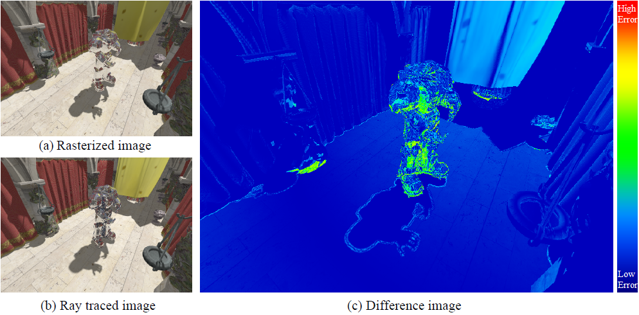Error Metrics for Smart Image Refinement
Julian Amann1, Matthäus G. Chajdas1, Rüdiger Westermann1
1Technische Universität München

Accepted to WSCG, the 20th International Conference on Computer Graphics, Visualization and Computer Vision 2012
Abstract
Scanline rasterization is still the dominating approach in real-time rendering. For performance reasons, realtime ray tracing is only used in special applications. However, ray tracing computes better shadows, reflections, refractions, depth-of-field and various other visual effects, which are hard to achieve with a scanline rasterizer. A hybrid rendering approach benefits from the high performance of a rasterizer and the quality of a ray tracer. In this work, a GPU-based hybrid rasterization and ray tracing system that supports reflections, depth-of-field and shadows is introduced. The system estimates the quality improvement that a ray tracer could achieve in comparison to a rasterization based approach. Afterwards, regions of the rasterized image with a high estimated quality improvement index are refined by ray tracing.
Download
- Paper (WSCG Journal, page 127-135)
